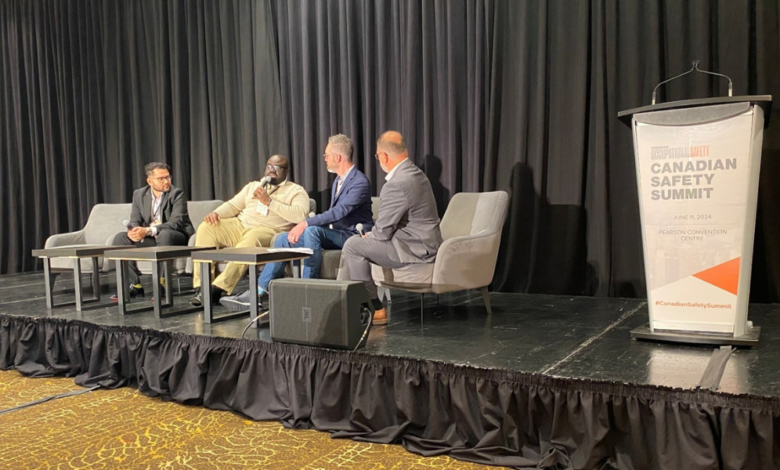Canadian Safety Summit spotlight on artificial intelligence

Leveraging AI to enhance safety outcomes
Alabi elaborated on the transition from subjective human observations to objective data analysis, noting, “the importance of data is that it’s now objective versus the subjective data of human observations. AI’s ability to continuously intake and interpret data will drive our analytics teams to new horizons.” This shift towards objective data is crucial in enhancing the accuracy and reliability of safety assessments.
Uprety provided a compelling example of AI in action within Microsoft’s construction projects. “We’re developing data centers and have started using AI tools like ChatGPT to create predictive analysis models. These models assess high-risk activities and provide risk scores, which are then communicated to foremen and supervisors. This proactive approach has already helped us anticipate and prevent potential incidents,” he explained.
The panelists agreed that one of the key benefits of AI is its ability to handle large volumes of data efficiently, thus saving time and resources. Neveu remarked, “AI will solve the problem of time, the most expensive commodity. By automating mundane tasks like hazard identifications and safety inspections, safety professionals can focus on strategic decision-making and solution implementation”.
Moreover, the integration of AI with other technologies like wearables and smart robots was a focal point of the discussion. Uprety highlighted the synergy between AI and physical technologies, saying, “when we look at robotics and wearables, we’re seeing AI’s intelligence manifest in physical form. For instance, using virtual reality for training in dynamic construction environments can significantly enhance safety protocols”.



